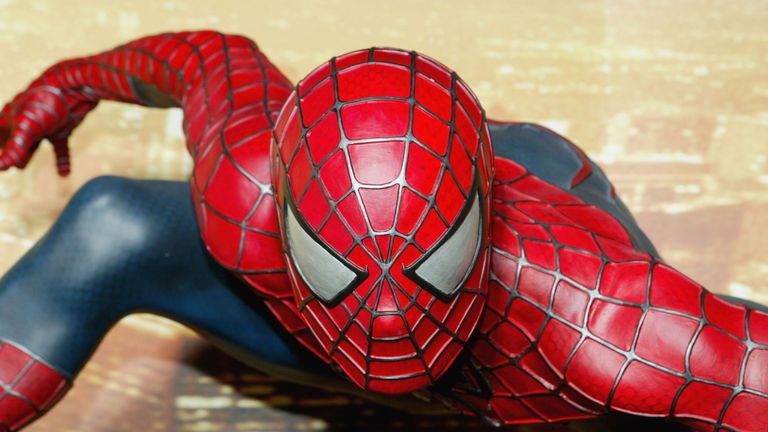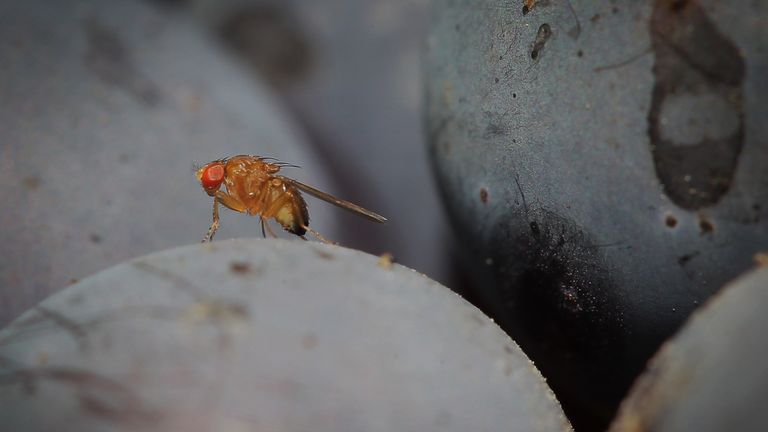'Spider-Man Gene' Is Discovered In Flies
If the chemical can be turned off in disease-carrying flies, they could be killed off by making them stick to surfaces.
Tuesday 12 July 2016 16:03, UK
A gene has been discovered in flies that could be switched off to make them stick to the wall like Spider-Man.
Because of the likeness to the comic book hero, scientists have named the gene 'Spidey'.
If the chemical can be manipulated and turned off in disease-carrying flies and agricultural pests, they could be killed off by making them stick to surfaces and die.
The gene causes flying insects to develop a waxy layer made up of lipids, which protects them from the elements.
The layer also carries information about the age, sex and social status of the carrier.
Without the shield, gunk builds up on flies, which eventually creates a force that sucks them down and makes them stick to surfaces.
Yin Ning Chiang of the National University of Singapore said: "Loss of the lipids allows substances like food to accumulate on the surfaces of their legs.
"The flies eventually get completely stuck to surfaces."
Switching off the gene would also disrupt the mating patterns in flies, because it helps flies to choose mates of the right species.
Tristram Wyatt, of the University of Oxford, told the New Scientist: "The discovery of this gene could be a very useful tool.
"It could help scientists to study the pheromones of fruitflies and further our knowledge of how these chemicals have shaped speciation and evolution."
As well as using the discovery for pest control purposes, understanding how the lipid coating works could help scientists to develop natural anti-rust surface coatings.




